Related Research Articles
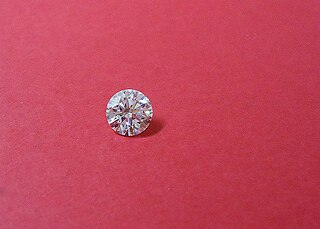
The carat (ct) is a unit of mass equal to 200 mg, which is used for measuring gemstones and pearls. The current definition, sometimes known as the metric carat, was adopted in 1907 at the Fourth General Conference on Weights and Measures, and soon afterwards in many countries around the world. The carat is divisible into 100 points of 2 mg. Other subdivisions, and slightly different mass values, have been used in the past in different locations.

Opal is a hydrated amorphous form of silica (SiO2·nH2O); its water content may range from 3 to 21% by weight, but is usually between 6 and 10%. Due to its amorphous property, it is classified as a mineraloid, unlike crystalline forms of silica, which are considered minerals. It is deposited at a relatively low temperature and may occur in the fissures of almost any kind of rock, being most commonly found with limonite, sandstone, rhyolite, marl, and basalt.
Diamond cutting is the practice of shaping a diamond from a rough stone into a faceted gem. Cutting diamonds requires specialized knowledge, tools, equipment, and techniques because of its extreme difficulty.

A grain is a unit of measurement of mass, and in the troy weight, avoirdupois, and apothecaries' systems, equal to exactly 64.79891 milligrams. It is nominally based upon the mass of a single ideal seed of a cereal. From the Bronze Age into the Renaissance, the average masses of wheat and barley grains were part of the legal definitions of units of mass. Expressions such as "thirty-two grains of wheat, taken from the middle of the ear" appear to have been ritualistic formulas, essentially the premodern equivalent of legal boilerplate. Another source states that it was defined such that 252.458 units would balance 1 cubic inch (16 cm3) of distilled water at an ambient air-water pressure and temperature of 30 inches of mercury (100 kPa) and 62 °F (17 °C) respectively. Another book states that Captain Henry Kater, of the British Standards Commission, arrived at this value experimentally.

The Cullinan Diamond is the largest gem-quality rough diamond ever found, weighing 3,106 carats (621.20 g), discovered at the Premier No.2 mine in Cullinan, South Africa, on 26 January 1905. It was named after Thomas Cullinan, the owner of the mine. In April 1905, it was put on sale in London, but despite considerable interest, it was still unsold after two years. In 1907, the Transvaal Colony government bought the Cullinan and Prime Minister Louis Botha presented it to Edward VII, the British king who reigned over the territory, and it was cut by Joseph Asscher & Co. in Amsterdam.
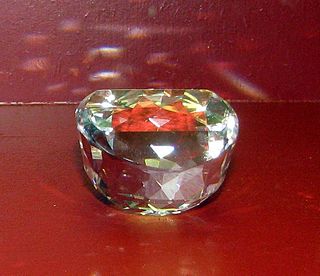
The Orlov, also known as The Great Mughal Diamond, is a large diamond of Indian origin, currently displayed as a part of the Diamond Fund collection of Moscow's Kremlin Armoury. It is described as having the shape and proportions of half a chicken's egg. In 1774, it was encrusted into the Imperial Sceptre of Russian Empress Catherine the Great.
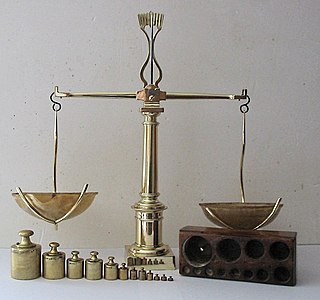
A scale or balance is a device used to measure weight or mass. These are also known as mass scales, weight scales, mass balances, and weight balances.

The earliest recorded systems of weights and measures originate in the 3rd or 4th millennium BC. Even the very earliest civilizations needed measurement for purposes of agriculture, construction and trade. Early standard units might only have applied to a single community or small region, with every area developing its own standards for lengths, areas, volumes and masses. Often such systems were closely tied to one field of use, so that volume measures used, for example, for dry grains were unrelated to those for liquids, with neither bearing any particular relationship to units of length used for measuring cloth or land. With development of manufacturing technologies, and the growing importance of trade between communities and ultimately across the Earth, standardized weights and measures became critical. Starting in the 18th century, modernized, simplified and uniform systems of weights and measures were developed, with the fundamental units defined by ever more precise methods in the science of metrology. The discovery and application of electricity was one factor motivating the development of standardized internationally applicable units.

Harry Winston was an American jeweler. He donated the Hope Diamond to the Smithsonian Institution in 1958 after owning it for a decade. He also traded the Portuguese Diamond to the Smithsonian in 1963 in exchange for 3,800 carats of small diamonds.

A truck scale (US), weighbridge (non-US) or railroad scale is a large set of scales, usually mounted permanently on a concrete foundation, that is used to weigh entire rail or road vehicles and their contents. By weighing the vehicle both empty and when loaded, the load carried by the vehicle can be calculated.
The Andamooka Opal is a famous opal which was presented to Queen Elizabeth II in 1954 on the occasion of her first visit to South Australia. The opal was mined in Andamooka in 1949. The opal was cut and polished by John Altmann to a weight of 203 carats (40.6 g). It displays a magnificent array of reds, blues, and greens and was set with diamonds into an 18 karat (75%) palladium necklet.
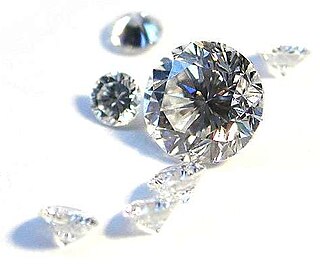
Diamond is one of the best-known and most sought-after gemstones. They have been used as decorative items since ancient times.
The Halley's Comet Opal is the largest uncut black opal in the world, according to the Guinness Book of World Records. It is so named because it was unearthed in 1986, a year when Halley's Comet could be seen from Earth. It is the third largest gem grade black opal ever recorded, the largest one extant, and the largest specimen ever found in its region. It was found at Lightning Ridge, New South Wales, Australia by the Lunatic Hill Mining Syndicate. It weighs 1,982.5 carats and is about the size of a man's fist. The Halley's Comet Opal is a very fine specimen, with few flaws or blemishes and a large green and orange 1.6 cm (0.63 in) thick color bar which goes through the opal. Formed about 20 million years ago, it is an example of a nobby, which is a natural lump-shaped opal found only at Lightning Ridge. As of 2006 it was for sale at $1.2 million.

The Flame Queen Opal is perhaps the most famous of all opals. It is the best-known example of "eye-of-opal", an eye-like effect created when opal in-fills a cavity.
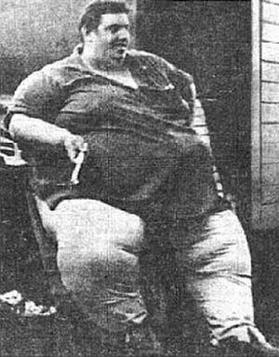
Jon Brower Minnoch was an American man who was the heaviest recorded human in history, weighing approximately 1,400 lb at his peak. Obese since childhood, Minnoch normally weighed 800–900 lb during his adult years. He owned a taxi company and worked as a driver around his home in Bainbridge Island, Washington.
Deep Blue Sea is a hat designed by Australian milliner, Ann-Maree Willett, which is made from Australian wool felt and set with 26 precious opals from Lightning Ridge, weighing a total of 1447.5 carats.
The Olympic Australis opal is the largest and most valuable opal yet found and was valued at A$2,500,000 in 1997. It was found in 1956 at the 'Eight Mile' opal field near the town of Coober Pedy in South Australia.

The Dom Pedro aquamarine is the world's largest cut aquamarine gem. It was cut from a crystal originally weighing approximately 100 pounds (45 kg) and measuring more than 3 feet (0.91 m) in length. The stone was mined in Pedra Azul, in the state of Minas Gerais in Brazil around 1980, and named after the Brazilian emperors Pedro I and Pedro II. The blue-green gemstone was cut by Bernd Munsteiner into an obelisk form weighing 10,363 carats. The finished dimensions measure 14 inches (36 cm) tall by 4 inches (10 cm) wide. The jewel was donated to the Smithsonian Institution by Jane Mitchell and Jeffery Bland. It is housed in the National Museum of Natural History's Janet Annenberg Hooker Hall of Geology.
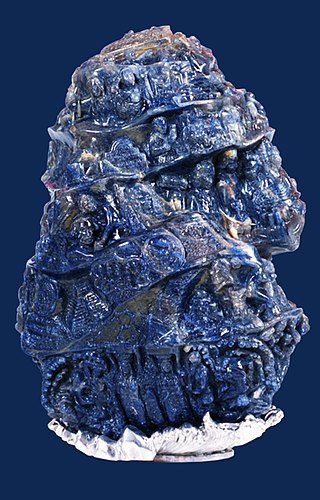
The Millennium Sapphire is a blue sapphire discovered in 1995 in Madagascar, the natural dark–blue gem weighed 89,850 carats.
References
- ↑ "The Guinness book of records, 1993" October 1992, ISBN 0-85112-978-1, p.22